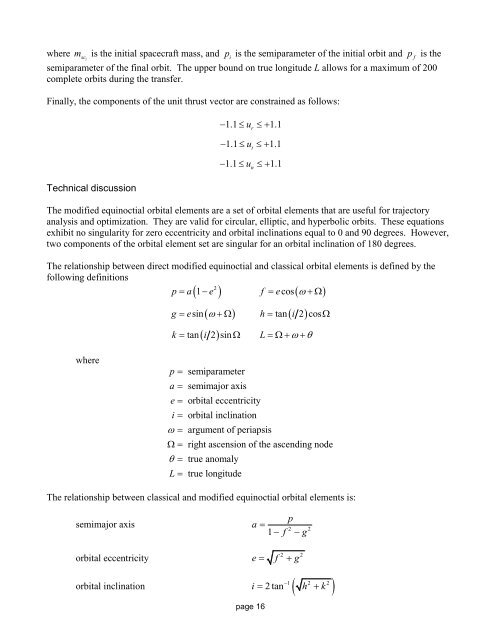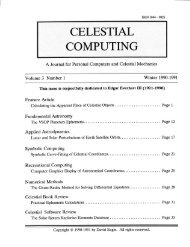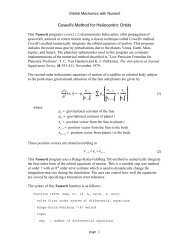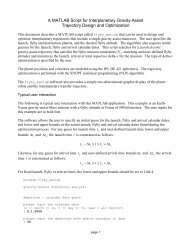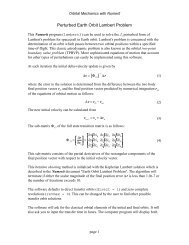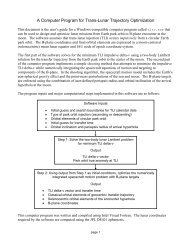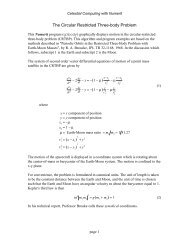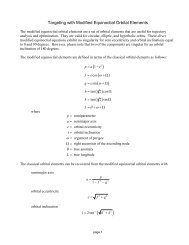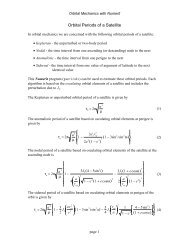PDF document - Orbital and Celestial Mechanics Website
PDF document - Orbital and Celestial Mechanics Website
PDF document - Orbital and Celestial Mechanics Website
You also want an ePaper? Increase the reach of your titles
YUMPU automatically turns print PDFs into web optimized ePapers that Google loves.
wheremsc iis the initial spacecraft mass, <strong>and</strong> piis the semiparameter of the initial orbit <strong>and</strong>pfis thesemiparameter of the final orbit. The upper bound on true longitude L allows for a maximum of 200complete orbits during the transfer.Finally, the components of the unit thrust vector are constrained as follows:Technical discussion1.1 u 1.11.1 u 1.11.1 u 1.1The modified equinoctial orbital elements are a set of orbital elements that are useful for trajectoryanalysis <strong>and</strong> optimization. They are valid for circular, elliptic, <strong>and</strong> hyperbolic orbits. These equationsexhibit no singularity for zero eccentricity <strong>and</strong> orbital inclinations equal to 0 <strong>and</strong> 90 degrees. However,two components of the orbital element set are singular for an orbital inclination of 180 degrees.The relationship between direct modified equinoctial <strong>and</strong> classical orbital elements is defined by thefollowing definitionsrtn21 cosp a e f e g esin h tan i 2 cosk tan i 2 sin L wherep a e i L semiparametersemimajor axisorbital eccentricityorbital inclinationargument of periapsisright ascension of the ascending nodetrue anomalytrue longitudeThe relationship between classical <strong>and</strong> modified equinoctial orbital elements is:psemimajor axis a 2 21 f gorbital eccentricity2 2e f gorbital inclination i 2 tan 1 h 2 k2page 16


